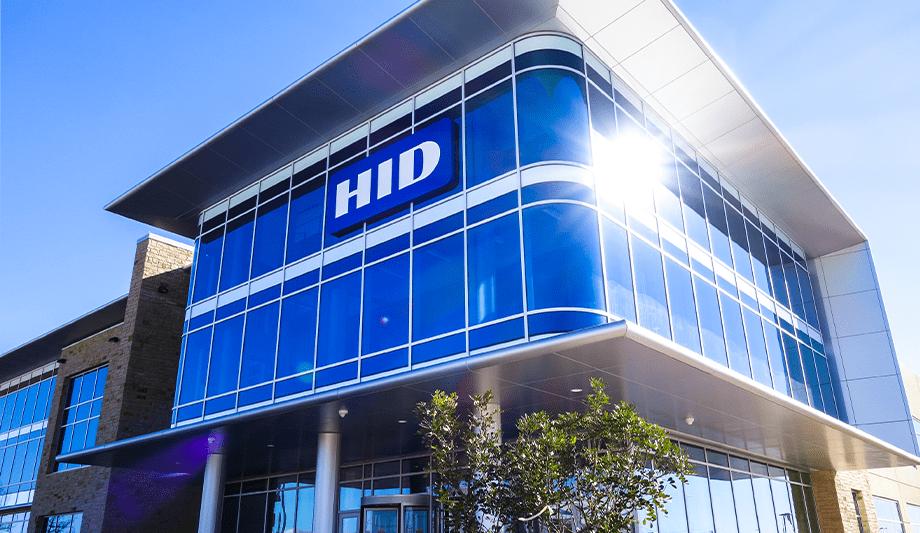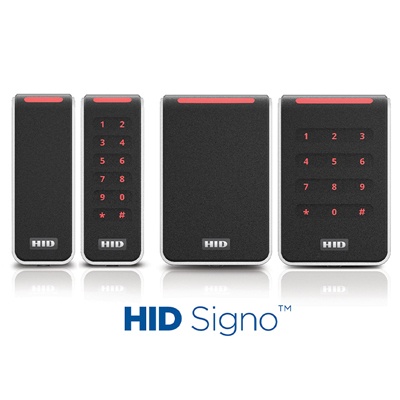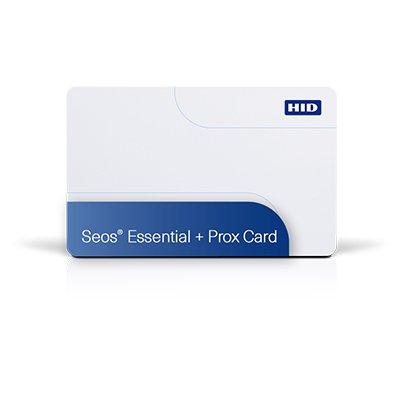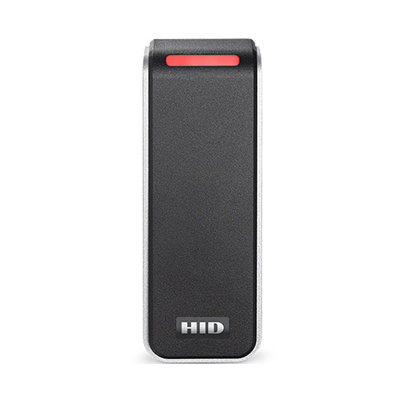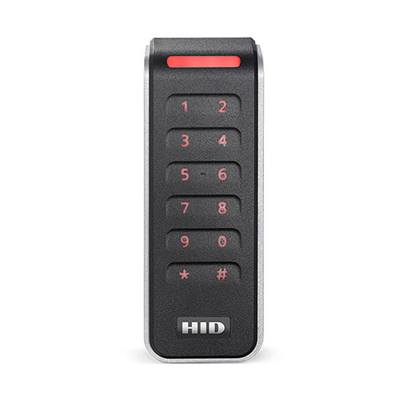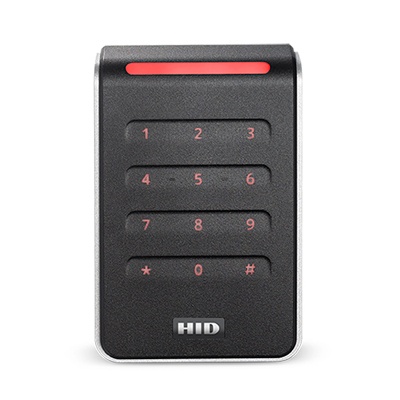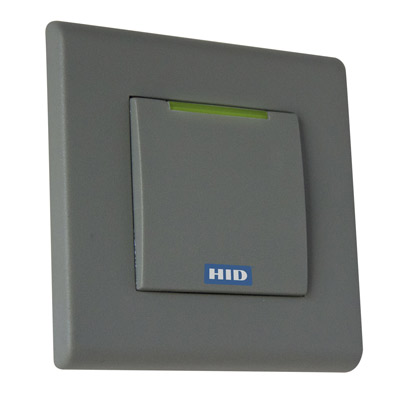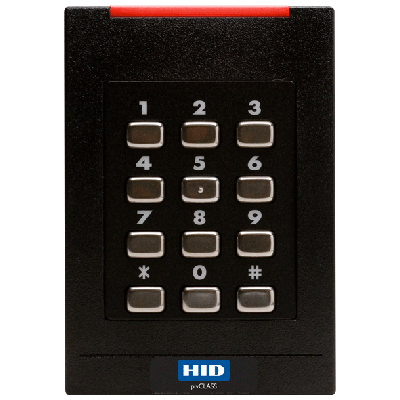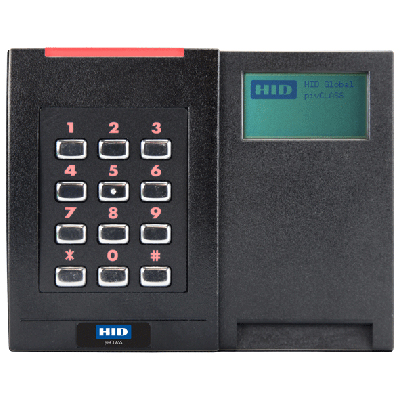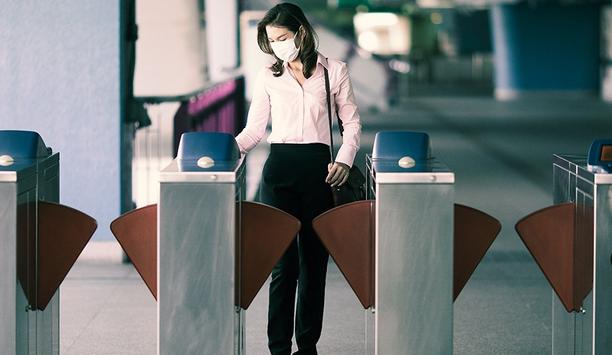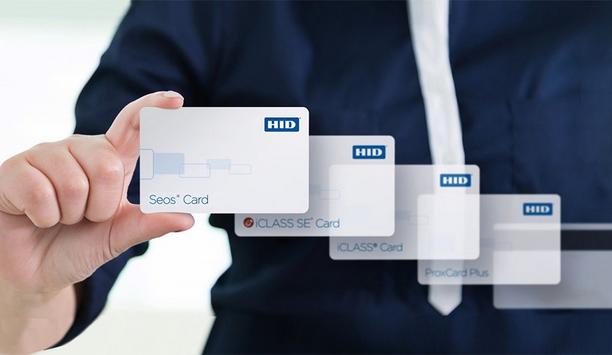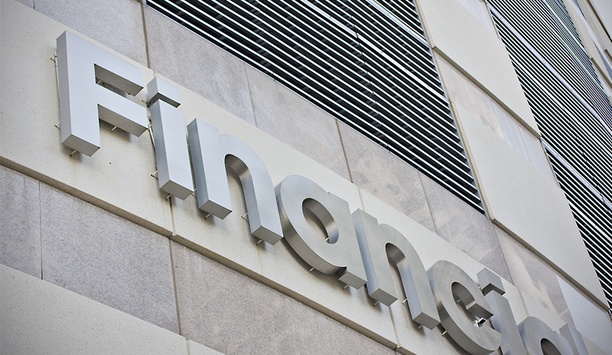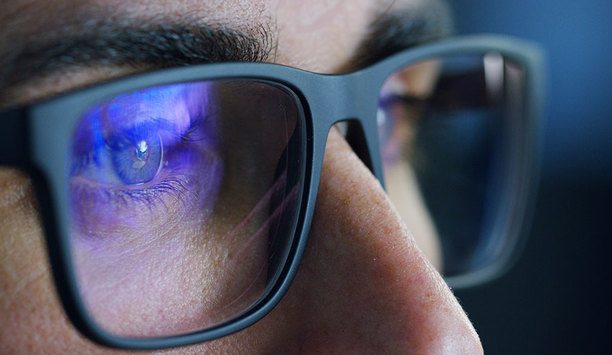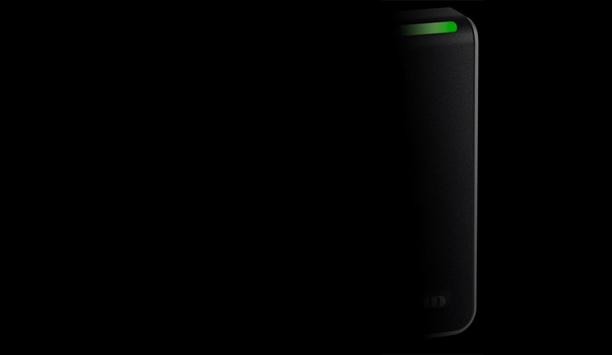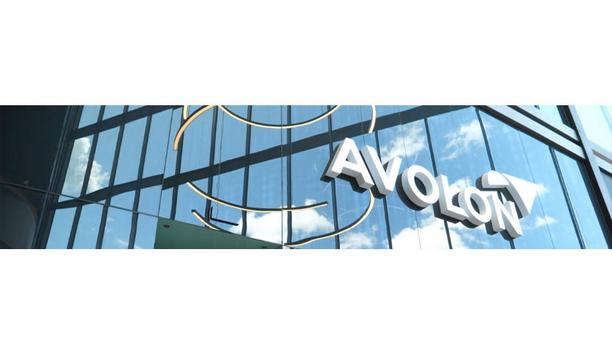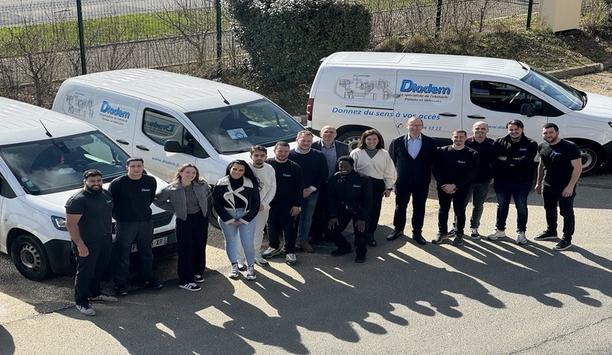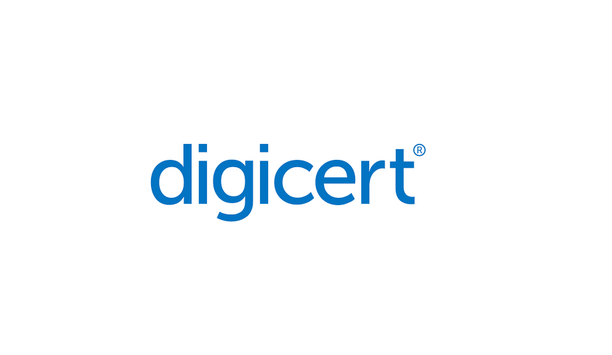If one employee stands less than six feet away from another employee, a fob attached to a lanyard around his or her neck emits an auditory beep – an immediate reminder to observe social distancing. If an employee were to be diagnosed with COVID-19, a cloud-based database provides a record of who at the company the sick employee had contact with.
These capabilities of HID Location Services ensure social distancing and provide contact tracing to enable companies to return to work safely. They have been deployed in a pilot program at HID Global’s Corporate Headquarters in Austin, Texas.
Social distancing using a BLE beacon
To ensure social distancing, a Bluetooth Low Energy (BLE) beacon is emitted from an employee’s fob (or from a badge that has the same functionality). The beacon communicates peer-to-peer with a beacon emitted by another employee’s fob or badge to alert if the location of the two employees is less than six feet apart.
To ensure social distancing, a Bluetooth Low Energy (BLE) beacon is emitted from an employee’s fob
For contact tracing, the beacons communicate via a nearby “reader” (a BluFi BLE-to-Wi-Fi gateway) to the Bluzone cloud-based software-as-a-service. The building area covered by each reader constitutes a “zone,” and the system records when two beacons are signaling from the same zone, which indicates contact between employees. In effect, the system records – historically and forensically – who was near whom (and for how long) using the zone-based approach.
“In the workplace, we provide organisations with visibility into the location of their workforce,” says Mark Robinton, Vice President, IoT Services Business Unit at HID Global.
Pilot program spans variety of environments
By documenting where a sick individual moved in the building, the system also can guide any need to close off a certain area for deep cleaning. Instead of quarantining a whole building, a company could quarantine a small subset of employees who were likely exposed. Importantly, the system only reports data, while management makes the actual decisions about how to respond.
The site of the pilot program is the 250,000-square-foot HID Global facility in Austin, which includes a variety of environments, including manufacturing areas, an executive suite, cubicles, a training area, a cafeteria, and lobbies. This spectrum of use cases enables the pilot program to evaluate how the system works in various scenarios. The building in Austin has two floors, plenty of natural lighting and emphasises sustainability in its design.
 |
| HID Location Services ensure social distancing and provide contact tracing |
Pilot starts small and expands
For the pilot program, 80 readers were installed in a wide area in the facility, including a variety of environments. Initially 30 badges and 30 fobs, all BLE-enabled, were issued to employees. If a badge identifies another nearby beacon (suggesting a social distancing failure), it emits a blinking LED light, which can be seen by the offending co-worker. The fobs emit an audible beep, which employees have overwhelmingly said they prefer. Observers overseeing the pilot program have documented employee reaction and comments.
It emits a blinking LED light, which can be seen by the offending co-worker
There were challenges in setting up the pilot program remotely to ensure fewer employees were on site during the pandemic. The equipment was provisioned in Florida and then shipped to the Austin location.
Fine-tuning was required to adjust the signal strength of the BLE beacons. The badges were initially more powerful, but the strength was dialed back to be comparable to the fobs and within the six-foot social distancing range. Signal strength is also a variable in diverse environments – the 2.4 Ghz signal tends to reflect easily off metal, so adjustments in signal strength are needed in a factory setting, for example, versus a collection of cubicles.
“This facility is large enough and diverse enough that it provides great test results and quality data to analyse,” says Dean Young, Physical Security Manager at HID Global. “Our employees are eager to be part of the pilot to demonstrate that we use the technologies we provide to our customers, and they want to help us stay in compliance with social distancing and contact tracing.”
Ensuring privacy while protecting employees
HID Global’s headquarters had approximately 425 employees before the coronavirus pandemic lowered the number drastically to include only essential workers. As more people return to work, additional fobs and badges are being issued to expand the scope of the pilot program. The program is also incorporating contact tracing of suppliers and others who visit the facility.
Except when triggered by contact among employees, locations are not recorded. Each employee’s location is always available in real-time (e.g. in case of an emergency), but they are not “tracked.”
Through BluFi placement and geofence capabilities, the system closes off private areas where location should not be monitored, such as a rest room. Geofencing also identifies when employees enter and/or exit the area covered by the pilot program.
Although each beacon is associated with an employee, the employee’s identity is not part of the data stored in the cloud, so there are no privacy concerns. Data is completely anonymised, and no personally identifiable information (PII) is stored in Bluzone. Other computer systems in a company, such as a human resources (HR) program, can privately and securely store the identities associated with each beacon.
Other applications for HID location services
In addition to social distancing and contact tracing applications, HID Location Services offer other use cases ranging from asset tracking and employee safety/security to location analytics. For example, the system can analyse room usage for better building management and operational efficiency. It can also quickly find people in emergency situations. These use cases ensure continued value for a system even after concerns about social distancing and contact tracing have faded.
The system can analyse room usage for better building management and operational efficiency
Another big selling point is the ability of a company to be better prepared in case of a future pandemic, or a second wave of this one, says Robinton.
The HID Location Services social distancing and contact tracing applications will be available at the end of Q3 and will be rolled out through HID Global’s existing integrator channel. Vertical markets likely to embrace the technology include healthcare, where hospitals need to track patients as they come in and to know which other patients or staff they may have been exposed to. The financial sector is another likely market, as is manufacturing, which is looking to avoid the prospect of shutting down an entire plant. It’s better to address the three or four people who were near a sick employee than to shut down the plant. In the hospitality industry, fobs can be used to signal duress by the housekeeping staff.

